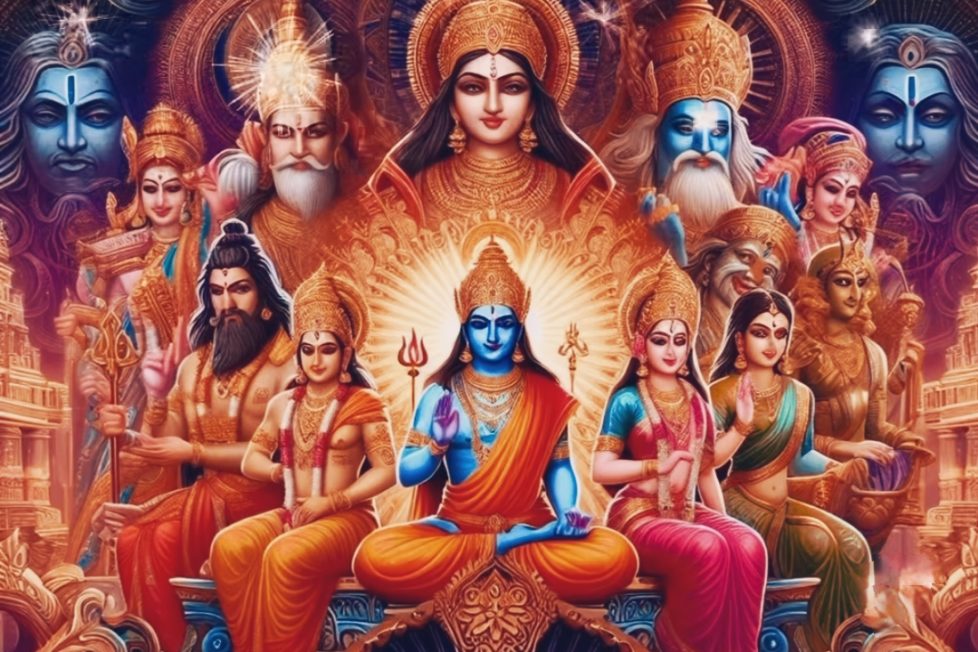‘Parama Guru Mandali’ and Politics


In the Mahabharata, Yudhistira, the noble king, received crucial guidance and support from two divine incarnations (avataras): the venerable sage Maharshi Vedavyasa and the illustrious Lord Sri Krishna. Both were born with a divine purpose, destined to play vital roles in the grand cosmic plan. Their presence within the illustrious Parama Guru Mandali signifies their extraordinary status as guiding lights for humanity. The ‘Parama Guru Mandali’, a celestial council of enlightened beings guiding humanity’s spiritual evolution.
Sri Krishna is also a part of Parama Guru Mandali. This is a surprise to many. In fact, Sri Krishna is not a Maharshi. He is not an eternal being but a divine avatara. Even then he is a part of a Parama Guru Mandali. In his previous avataras in previous cosmic cycle of Creation, Sri Krishna manifested as Narayana Rishi. Therefore, he is a part of the Parama Guru Mandali because he performed Tapasya as Narayana Rishi in Baradinath (Badarika Ashrama) in Krita yuga being, one of the two Nara Narayana combination. The second Rishi Nara is Arjuna the middle one out of the five Pandavas. For implementing divine plans and decision on Earth and to make sure that they are carried out, to influence and guide political events of humanity and the spiritual evolution of plans for humanity, both aspects – spiritual as well as political – should be guided together. The role of Parama Guru Mandali extends beyond mere spiritual guidance. They influence and guide political events, ensuring alignment with the divine plan for humanity’s evolution. This is crucial because, as history tragically demonstrates, human politics is often plagued by self-interest, crazy power lust, and dictatorial tendencies. Blinded by ambition, such leaders wreak havoc on the lives of countless people. Therefore, the Parama Guru Mandali’s guidance serves as a vital corrective force. By steering political events towards righteousness and aligning them with spiritual principles, they work to create a world where both individual enlightenment and societal well-being can flourish.
The Parama Guru Mandali turns and directs the humanity towards spiritual evolution which is the goal for the welfare of humanity and the worlds or Lokas. Sri Krishna directed the political events towards this goal. Vedavyasa Maharshi directed the spiritual events to the same goal.
Turning politics for welfare of the world:
In Sri Krishna, we find the political acumen and smartness to counter the mischief, the cunningness and wrong doings (adharma) with equally effective political smartness and devious and manipulated methods. In addition, Sri Krishna has the firmness, decisiveness and indomitable will coupled with adventure to attack, to take to arms, to respond to and crush events which can result in bloodshed. These important qualities and in addition, implicit obedience to the Parama Guru Mandali are found in Sri Krishna. The history of Bharat that is India was guided by these two persons. The Mahabharata war was fought to eliminate the selfish, the opportunistic, the power thirsty political rulers and leaders. Following the war, all the states were unified into a single country that is Bharat. The head of this great Yajna of unification of a Nation through Rajasuya Yajna is Yudhistira. Sri Krishna provided political protection for this Yajna and Maharshi Vyasa provided the spiritual power and strength to conduct the mantra bhaga (mantra part) as Adhvarya. The Ritviks (the priests) who actually performed the Yajna are the Maharshis of the Parama Guru Mandali, further emphasizing the crucial role of divine wisdom in this political act.
The Mahabharata stands as a powerful testament to the combined force of spiritual guidance and decisive action in shaping the destiny of nations. In Sri Krishna, we find a fascinating archetype of the divine leader who seamlessly navigates the realms of politics and war, guided by wisdom and a unwavering commitment to Dharma.
DISCLAIMER: The author is solely responsible for the views expressed in this article. The author carries the responsibility for citing and/or licensing of images utilized within the text.
